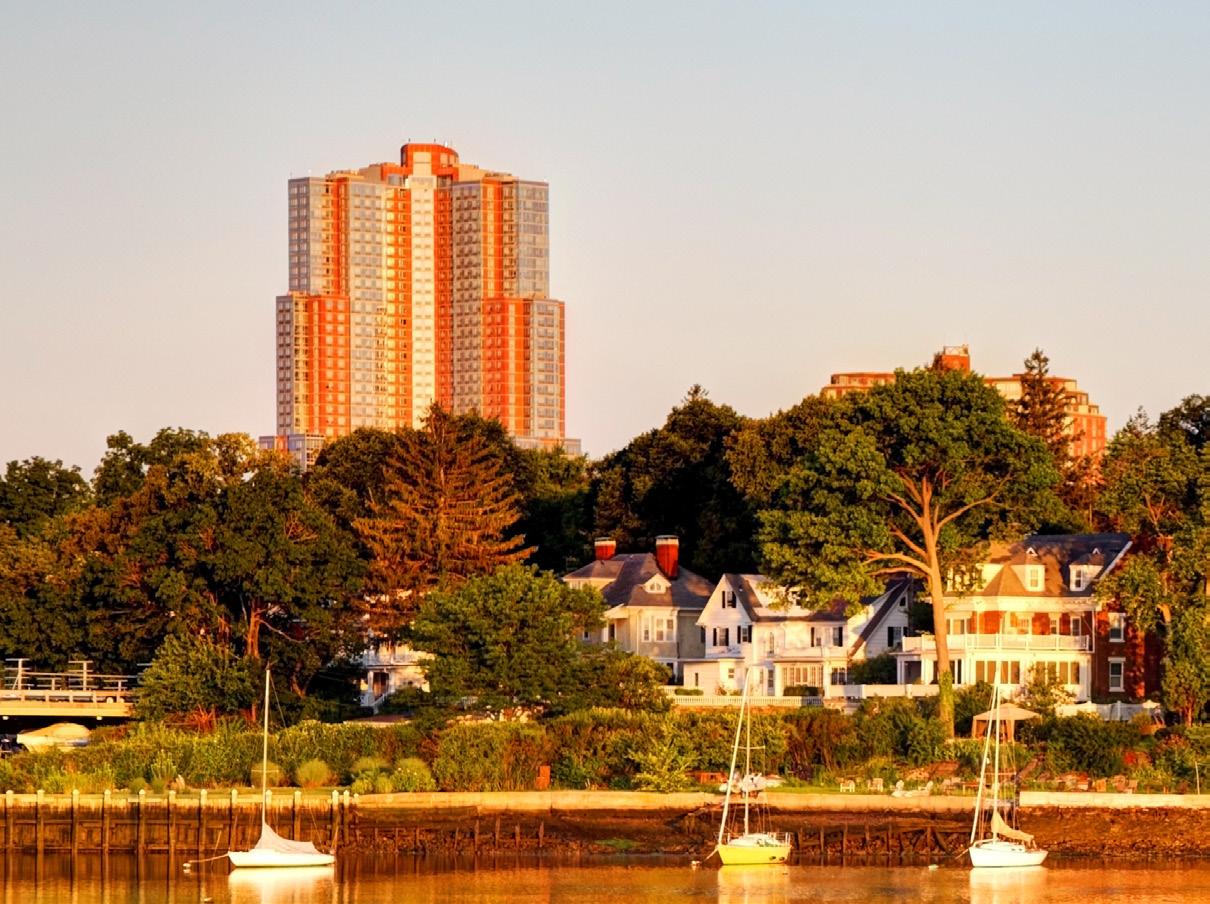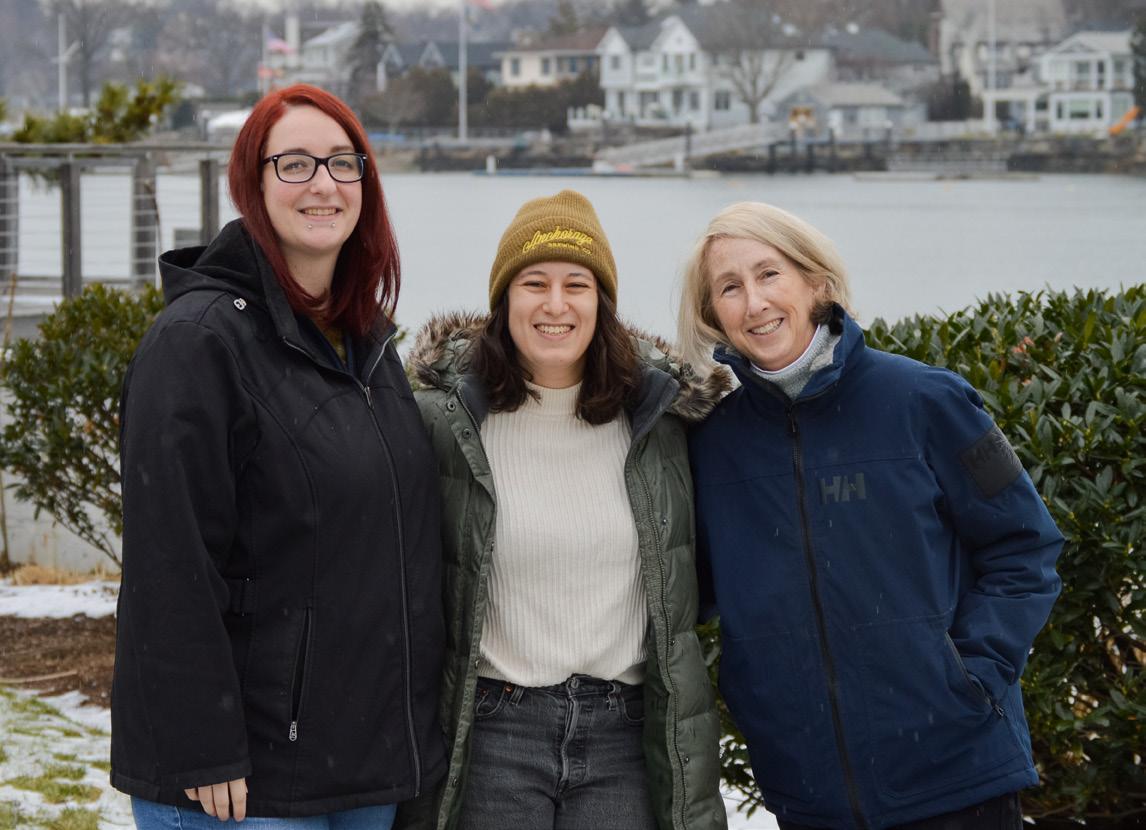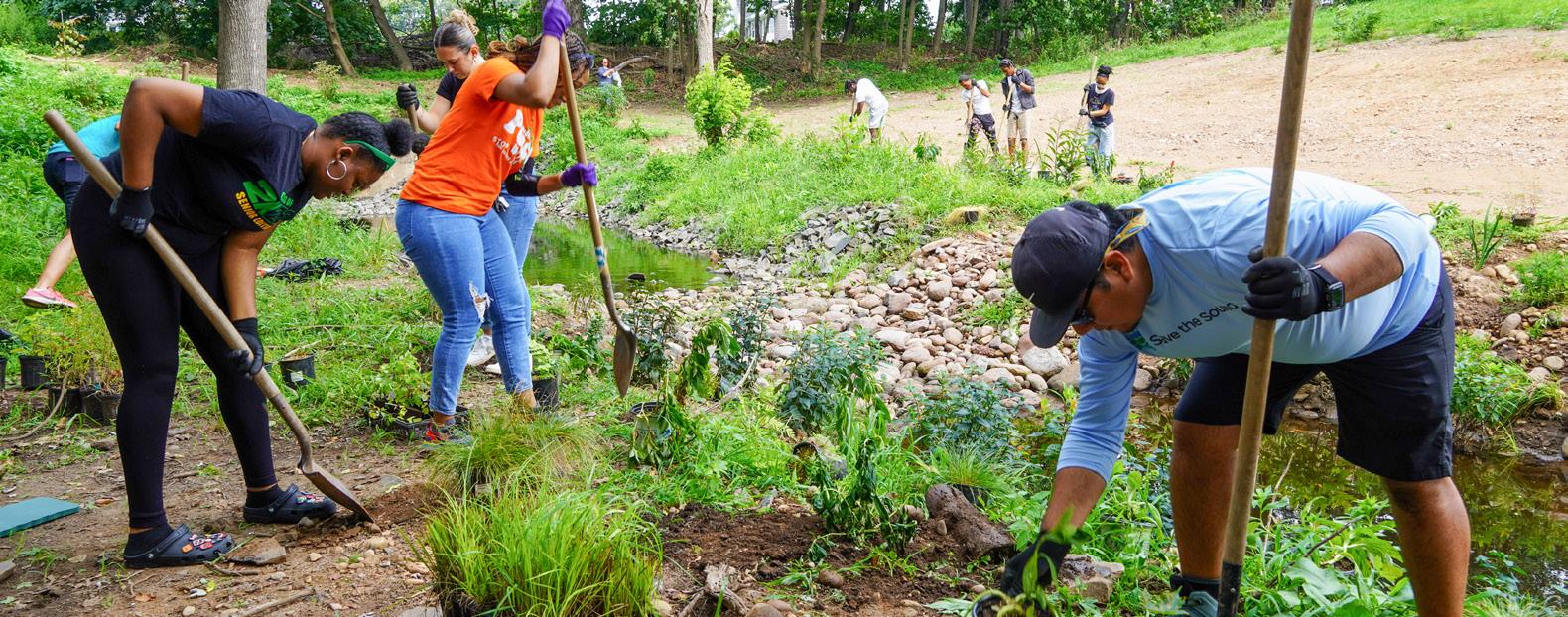SoundBites
2024 State Legislative Priorities
Grassroots Activism: The Importance of Getting Involved
A Legal Battle for Clean Water Green Infrastructure Builds Climate Resilience



Grassroots Activism: The Importance of Getting Involved
A Legal Battle for Clean Water Green Infrastructure Builds Climate Resilience


As we embark on a new legislative year, Save the Sound remains steadfast in our commitment to environmental advocacy across Connecticut and New York. Our legislative agendas for 2024 reflect our dedication to combatting climate change, protecting our waters, advancing environmental justice, and defending against attempts to weaken environmental protections. Here are our priorities:
• Hold Connecticut accountable to the state’s own Global Warming Solutions Act and establishing net-zero emissions targets by 2050.
• Accelerate renewable energy deployment and green our building sector.
• Increase funding for energy efficiency programs and reduce health-harming air pollution.
• Phase out consumer goods with toxic PFAS (polyfluorinated alkyl substances), a group of long-lasting chemicals
that can’t easily breakdown in the environment.
• Strengthen the Connecticut Inland Wetlands and Watercourses Act and incentivize protection of riparian buffers.
• Reduce inequities in permit expansions and renewals affecting facilities. Allow the state to reject permit and renewal applications for less harmful alternatives.
• Classify solid waste transfer stations and chemical recycling facilities as “affecting facilities” subject to environmental justice law.
• Watchdog and defeat rollbacks to environmental laws and other destructive provisions.
• Support the Suffolk County Water Quality Restoration Act and strengthen protections for Class C Streams, which are designated to allow fisheries and other non-contact activities, such as picnicking, fishing, camping, and more.
• Advocate for the Packaging Reduction and Recycling Infrastructure Act.
Stormwater Management & Resiliency
• Address stormwater runoff, flooding prevention, and water resiliency projects.
• Promote the use of green infrastructure and living shorelines.
Climate, Energy, & Environmental Justice
• Reduce fossil fuel emissions and ensure energy affordability.
• Prioritize transition from our mostpolluting power plants to renewable energy by 2030.
As we face the challenges ahead, we invite you to join us in advocating for a healthier and more sustainable future for our communities, habitats, and wildlife.

 Leah Lopez Schmalz President, Save the Sound
Leah Lopez Schmalz President, Save the Sound


If you’ve ever wondered whether showing up really matters, consider Mattituck Inlet in New York and Six Lakes in Connecticut. Mattituck Inlet, a vital coastal waterway that offers the North Fork of Long Island’s only access to the Sound, faces losing an entire forested hill adjacent to a local nature preserve to make way for two boat storage warehouses over an acre in size. Six Lakes, a 102-acre forested urban wetland, struggles with a legacy of soil pollution and awaits transformation into a clean public park. What do they have in common? Last year, people came out for both and made a difference.
Hundreds of North Fork residents attended two overflowing hearings in 2023 and submitted thousands of pages of testimony to protest the proposal on Mattituck Inlet. The planning board has hired consultants to complete a final Environmental Impact Statement, which describes and analyzes the impacts of a proposed project on the environment. The document will address
topics covered in over 1,000 written comments from concerned residents. Grassroots activism, led by Save Mattituck Inlet and Save the Sound, may make all the difference to prevent impacts on water quality, endangered species, and over 630 mature trees in a coastal oak beech forest. People on the North Fork found their voices and impressed even themselves. The Suffolk Times highlighted the “fervor” over the marina expansion as one of the top stories of 2023.
People in Hamden, Connecticut, made an impression, too. A hundred showed up for a public meeting in June to hear the Connecticut Department of Energy and Environmental Protection (DEEP) present information on the contamination at Six Lakes, sending a clear message that they expect DEEP to enforce a 38-year-old consent order requiring the Olin Corporation, which owns the property, to clean it up. In November, a hundred supporters again
turned out for a guided perimeter walk around the fenced-off property, led by the Six Lakes Park Coalition. The benefit wasn’t just in the message they sent with their presence; the gathering was also a chance to build people power as neighbors met neighbors, and community leaders connected with those they serve. Ideas were discussed over coffee, phone numbers were exchanged, and attendees were buoyed by the energy and vision of others, inspiring them to continue their efforts.
Becoming part of a grassroots movement isn’t difficult. A good place to start is our weekly email, where we share events and actions you can take. If you’re not already on the list, email info@savethesound.org to start your own grassroots journey!
Above: © Steve Borghardt
Two important developments in Save the Sound’s trajectory coincided in the spring of 2014. That May, the organization opened its first office in New York, a third-floor walkup in Mamaroneck. And while getting acquainted with the new surroundings, the staff started hearing reports from local pollution watchdogs and receiving notifications from the state’s brand-new sewage spill public alert system.
It soon became evident that a significant number of sewage overflows were occurring on the Long Island Sound side of Westchester County. Attorney Roger Reynolds, now our senior legal director, and the Mamaroneck staff investigated and found that the municipalities were failing to maintain their sewage pipes and allowing excess inflow and infiltration during storms. Inflow and infiltration (I&I) are terms used to describe how groundwater or stormwater enters a poorly maintained sanitary sewer system, causing excessive volume that can lead to illegal overflows. This overwhelmed the county sewage plants, causing them to discharge raw and undertreated sewage. The team discovered and reviewed a 2013 flow study conducted by Westchester County that confirmed that the municipalities were discharging far more water to the system than was allowed by state law.
“We saw there was a huge problem with the frequency of sewage overflows, which harmed Long Island Sound and endangered public health,” says Roger. “While the government had sought to address the issue for over a decade with consent order after consent order, they were making little or no progress. It became clear the problem was not going to be resolved any time soon unless we required meaningful documented repairs and committed to monitor compliance.”
On August 11, 2015, Save the Sound filed a formal Clean Water Act complaint against Westchester County and the 11 municipalities—Harrison, Larchmont, the Town of Mamaroneck, Mamaroneck Village, New Rochelle, Pelham Manor, Port Chester, Rye, Rye Brook, Scarsdale, and White Plains—for allowing their outdated and out of repair sewer systems to cause raw and undertreated sewage overflows into the Sound and local waters. Shortly after the litigation

was filed, some of the municipalities agreed to reduce their excess I&I that were leading to the overflows. Others embarked on sewer system studies designed to develop solutions and shared them with Save the Sound attorneys and engineers. Once there was agreement that the plan would fix the problem, the municipalities started implementing the repairs.
“This case really is a perfect example of why we’re here. We sparked huge clean water infrastructure investments in the county and in these communities that are going to pay off in the long term for local water quality and for Long Island Sound.”
Over the course of the next eight years, settlements were reached with individual municipalities, each of whom agreed to repair a certain number of defects in their system and pay for designated Environmental Benefit Projects (EBP) in their communities.


The last of those settlements was reached in mid-December of last year. After a judge sided with Save the Sound and issued an extensive decision denying the municipalities’ motion to dismiss, the four municipalities of the New Rochelle Sewer District—the City of New Rochelle, Town of Mamaroneck, and villages of Larchmont and Pelham Manor—came back to the table. The municipalities ultimately committed to study and repair 170 linear miles of sewer pipe, fix 25,000 defects, propose local ordinances to prevent I&I, and pay $180,000 toward an EBP to improve water quality in the sewer district’s area. The terms were approved by local boards and then signed in January 2024, and notice of the agreement has been filed with the court. There is a 45-day waiting period for Department of Justice review; and after that, assuming there are no objections, the agreement will be formalized.
Then all that will remain will be to settle with the County itself, and to remain vigilant in monitoring that the required repair work is being done and that all EBPs are on track. Save the Sound will continue to enforce the agreements when municipalities fail to comply. In addition to the original consent decrees, Save the Sound has entered into supplemental consent decrees with the municipalities of Port Chester, White Plains, and Rye to enforce its original orders and, in some cases, receive additional EBPs.
“This case really is a perfect example of why we’re here,” says Roger. “We sparked huge clean water infrastructure investments in these communities that are going to pay off in the long term for local water quality and for Long Island Sound.”
Learn about the latest updates to these cases at savethesound.org/legaldocket
Above: New Rochelle, NY.
Right: Blind Brook in Rye, NY.
Most of the agreements reached in our settlement with Westchester County municipalities include an Environmental Benefit Project (EPB) to address water quality issues in waterbodies impacted by the pollution. While these funds don’t go to Save the Sound, we help determine what work they support.

To date, the EBPs include:
Village of Rye Brook (Jan. 2021)
$47,000 for installation of a bio-retention filtration system to reduce pollution to the Byram River.
City of Rye (Feb. 2021)
A total of $300,000 between two consent orders to be used for projects benefiting water quality, including bioretention basins to treat stormwater pollution entering Blind Brook.
City of White Plains (May 2021)
$9,000 to Bronx River Alliance to stabilize and provide a canopy to address erosion on the east bank of Muskrat Cove.
Town/Village of Harrison (Nov. 2022)
$60,000 to the Westchester Soil and Water Conservation District for projects to remediate water pollution and improve water quality in the Westchester County Long Island Sound watershed.
Village of Scarsdale (June 2023)
$150,000 will be used on projects to benefit water quality in the Long Island Sound watershed, including a bioretention basin to treat stormwater pollution.


Save the Sound proudly welcomes a dynamic group of team members, each contributing their diverse talents to our projects. From legal expertise and strategic communications to water quality testing and donor relations, our recent hires have hit the ground running over the last year, making tangible strides towards our mission to fight climate change, save endangered lands, protect the Sound and its rivers, and work with nature to restore ecosystems.
As our organization continues to expand, we extend an invitation to all passionate individuals dedicated to environmental conservation to explore career opportunities with us. Keep an eye on our Jobs page (www.savethesound.org/jobs) for updates on how you can join a team of committed experts striving for a sustainable future. Together, let’s foster positive change for our environment and communities.
As the sun glistened on the salt marsh in the background, David Ansel, our vice president of water protection, stood at a portable podium in Larchmont, flanked by New York State Senator Shelley Mayer, Assemblyman Steve Otis, and many local officials. David spoke glowingly of the Living Shorelines Act, which days before had been signed into law by Governor Kathy Hochul.
The Act is a positive step toward a broader incorporation of nature-based solutions—like constructed marshes, artificial reefs, and rain gardens—into
the state’s efforts for making our coastlines and communities more resilient to severe weather made worse by climate change.
Save the Sound was there when momentum for this legislation was catalyzed, at a forum we hosted down the road in Rye in June 2021 to discuss water quality, ecological restoration opportunities, and the benefits of green infrastructure and nature-based solutions. So, it was fitting for us to be there to celebrate what had become New York’s newest law.

The devastation wrought by Hurricanes Maria and Fiona underscored Puerto Rico’s vulnerabilities, exposing flaws in its energy infrastructure and leaving millions without power or clean water. Now, though, the island is leading the way in embracing a human-centered approach that addresses inequality and injustice in the energy sector—a challenge that Connecticut also faces.
Alex Rodriguez, Save the Sound’s environmental justice specialist, attended the Solar & Energy Storage Association’s (SESA) summit in San Juan last November. The summit explored many avenues to bolster economic development and grid stability while prioritizing community empowerment.
The journey towards energy justice in Puerto Rico begins with recognizing systemic issues. The government’s response to the natural disasters, including a $13 billion investment

in the power
This has been made possible by strong bipartisan support, showing us what’s possible when all leaders recognize the urgency of action.
Puerto Rico’s experience highlights the imperative of prioritizing energy justice in policy agendas, uplifting marginalized voices, and ensuring equitable access to sustainable solutions. “Our pursuit of a fully renewable energy economy in Connecticut must lift up communities that have been left behind, and make sure those who have suffered the most are the first to benefit,” says Alex.
Scan QR code to learn more about the SESA summit.

In 2023, we collaborated with the Town of Hamden, Connecticut Department of Energy and Environmental Protection, and community members and partners to construct a large rain garden in Town Center Park in Hamden, CT. Rain gardens are a form of green infrastructure, a naturebased solution to stormwater flooding and pollution. The garden retains runoff and slowly infiltrates it into the ground, filtering out contaminants picked up as the stormwater flowed across impervious areas. These pollutants would otherwise flow into rivers and streams, making their way into the Sound. Rain gardens also provide habitat for local wildlife and green space for the community.
As storms increase in severity, green infrastructure builds climate resilience by reducing flooding. In January 2024, a month marked by heavy rainfall in our region, we witnessed Town Center Park in action. Stormwater successfully pooled in the rain garden, filtering through strategically layered rock, soil, sand, and native plants. As a result,

clean, filtered water was absorbed into the ground, contributing to the strengthening of our infrastructure in the face of climate change.
This rain garden was constructed with lots of help from the community, through volunteer planting events in June and October. Save the Sound shared an educational rain garden infographic flyer at the plantings, designed an interpretive sign that will be placed in
the park, and hosted a press conference with Senator Richard Blumenthal about the project. We also presented at Hamden’s Earth Day festival and brought materials about the Hamden rain garden to the Quinnipiac Riverfest and West River Water Festival.
This year, we look forward to implementing more green infrastructure solutions in New Haven and beyond.
From left to right: Jayson Velazquez, Acadia Center; Sergio Carrillo, CT Green Bank; and Alex Rodriguez, Save the Sound. grid, a new utility management model, and community-based data collection to help prioritize repairs, has marked a significant step towards revitalization. Above: Community volunteers lend a hand in contructing a rain garden at Hamden Town Center Park in Hamden, CT.
